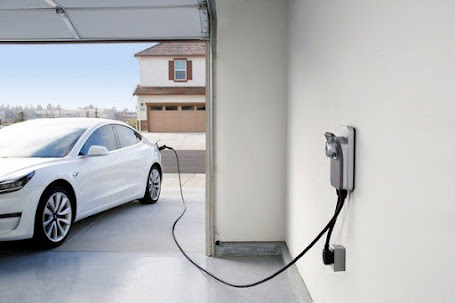fickle energy production, local electricity consumption
How electric cars are charged
WHAT ARE THE DIFFERENT WAYS TO CHARGE EVS?
There are 2 primary ways to charge Mahindra EVs:
- Normal Charge: Comes with a port installed at home/work place or from a charging station. Time taken for a complete charge depends on the drive train capacity.
- Quick Charge: Innovative charging technology with the Quick Charge charges the car completely in just 60 minutes. But the time taken to charge each car varies according to the model.
HOW DO I CHARGE THE CAR?
It is as easy as charging any of your other technology devices. All you have to do is plug the vehicle into any of the charge points available to you.
To know the voltage and ampere requirements for each product, click on the images below:
- The time it takes to charge an electric car can be as little as 30 minutes or more than 12 hours. This depends on the size of the battery and the speed of the charging point.
- A typical electric car (60kWh battery) takes just under 8 hours to charge from empty-to-full with a 7kW charging point.
- Most drivers top up charge rather than waiting for their battery to recharge from empty-to-full.
- For many electric cars, you can add up to 100 miles of range in ~35 minutes with a 50kW rapid charger.
- The bigger your car’s battery and the slower the charging point, the longer it takes to charge from empty to full.
What is smart EV charging?
Smart EV charging or intelligent charging refers to a system where an electric vehicle and a charging device share a data connection, and the charging device shares a data connection with a charging operator.
As opposed to traditional (or dumb) charging devices that aren’t connected to the cloud, smart charging allows the charging station owner to monitor, manage, and restrict the use of their devices remotely to optimize energy consumption.
How do smart EV charging stations work?
Smart EV charging is powered by an intelligent back-end solution that brings real-time data from connected charging devices and charging events to the charging station owner’s fingertips.
As stations are connected to the cloud, they can be managed based on various signals: such as fickle energy production, local electricity consumption, amount of other vehicles being charged or electrical devices being used on a nearby premise. In order to create a more sustainable energy system based on renewable energy sources, EV charging has to be smart.
What is top up charging?
Most electric car drivers plug-in to charge whenever they park, be it at home overnight or during the day at the supermarket, gym or their workplace. This is called top up charging.
- Instead of letting the battery run empty and waiting while it fully recharges, drivers make use of the time their car is parked (which is about 95% of the time) to keep the battery topped up.
- Public and workplace charging points typically range from 7kW to 22kW, making them ideal for top up charging.
- Combining daytime top-up charging with overnight charging at home is an effective way to keep your electric car charged and ready to go.


